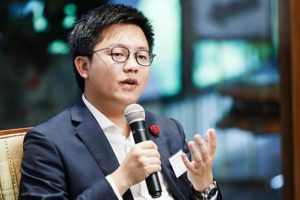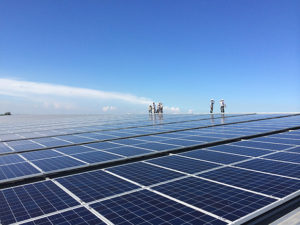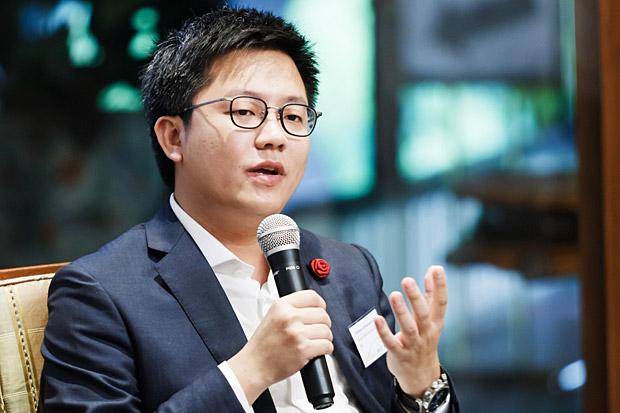
From remote villages to the bright lights of Bangkok, one entrepreneur believes that renewable energy is way to go
Mr Somboon believes in his renewal energy business but he also wants it to mean something to society, he says.
Around 10 years ago, a young man set off to study electrical power engineering at university after finishing secondary school. His ambition at that time was energised by a dream of becoming the head of the country’s power generating authority. But while life has taken him down a different path, it is one that is equally as bright.
“I thought it would be cool to be the top dog at the sole organisation generating power for people across the country,” says Somboon Lertsuwannaroj, now 30 years old.
But, as is so often the case, things might have turned out differently than Mr Somboon had once planned, but the planning itself was indispensable to what lay ahead.
After getting into Chulalongkorn University’s Faculty of Electrical Engineering, he periodically volunteered with the institution’s camp for rural development.

Initially, he felt like his field of study was a million miles away from the remote villages he visited, where electricity for many was a luxury. Mr Somboon, by contrast, was focused on developing power plants to serve rising demand in ever-expanding urban centres. But while his mind was in the city, his heart was in those peaceful villages.
That reality ultimately inspired him to seek different ways of fulfilling people’s energy needs.
After graduation, Mr Somboon spent a few years working with a foreign renewable power generating company that paid him around 24,000 baht a month. In 2011, he, along with a group of engineers, resigned from that firm to set up a new renewable power generating company, Impact Electrons Siam Ltd (IES).
Starting out, the company’s registered capital was only 4 million baht.
Their first job was to develop a 120-megawatt wind farm in Huai Bong, Nakhon Ratchasima province.
“I think, and I believe that everybody knows, renewable energy is a champion. It allows for the generation of power without destroying anything else,” says Mr Somboon.
After setting up the first wind farm, his company eventually sold it off to get cash to set up a new business abroad — a solar farm in Japan.
Now, Mr Somboon is the executive vice-president of a multi-billion company that operates wind farms in Japan with a combined capacity of 185MW.
His company was also granted a licence to develop a 600MW wind farm, covering 68,000 hectares, in the Laotian province of Attapeu.
To tap into the ever-rising renewable energy trend, Mr Somboon says the company is also developing three wood pellet manufacturing factories in the southern region of Thailand, with a production capacity of 120,000 tonnes per year.
“This project will help add value to rubber wood in the South, where we have up to 360,000 tonnes of the material from ageing trees that can no longer produce latex for rubber industry,” says Mr Somboon.
He says that the project will also help local farmers suffering from uncertain rubber prices add value to their resources and utilise them more efficiently.
The rubber wood pellets produced at his factory are for export to international markets, particularly Japan, where his company has already established a strong foothold in the renewable energy industry.
IES is also in the process of developing a greenfield biomass power plant in Japan. The company is aiming to explore investment opportunities in operating assets by leveraging its capacity to secure long-term power supply, which is the most significant factor to successfully implementing the project in Japan, says Mr Somboon.
To capitalise on the increased popularity of solar power in Thailand, he says his company has set up a subsidiary, Impact Solar, to provide solar rooftop installations and maintenance services to consumers.
“In a sense, it’s like consumers are paying us for electricity, but at 5-10% lower than government rates,” says Mr Somboon.
He says the solar project has received a warm welcome, with an office owner and a factory owner expressing their interest in the solar power installations.
At this stage, Mr Somboon is enjoying the progress his company has made and will continue to focus on making solar rooftop installations for factories, buildings and shopping malls, which can meet their power needs with energy harvested during daylight hours.
He stresses, however, that it is still not worth it for households to invest in solar rooftops, as most white collar workers who might buy the installations will be at the office all day and not have an opportunity to use the power being produced from their rooftops.
“We will have to wait until the government allow households to sell their power back to the state. That would help encourage residents to start investing in solar rooftops, providing great growth opportunities,” says Mr Somboon.
Asked whether the company would list on the Stock Exchange of Thailand as it had performed quite well over the past few years, the answer for now is no.
“We want to be an organisation that helps find power solutions for the people. We don’t want to be so big like other private power producers,” he says.
Mr Somboon says he still thinks of the villages and villagers he encountered during his university days. The question remains: how can he bring them power to help them better manage their lives?
“I’m not working for a charity. I still have to work for money,” he says. “But at the same time, I think my work should mean something to the society as well.”
Source: http://www.bangkokpost.com/business/news/1106797/power-to-the-people

